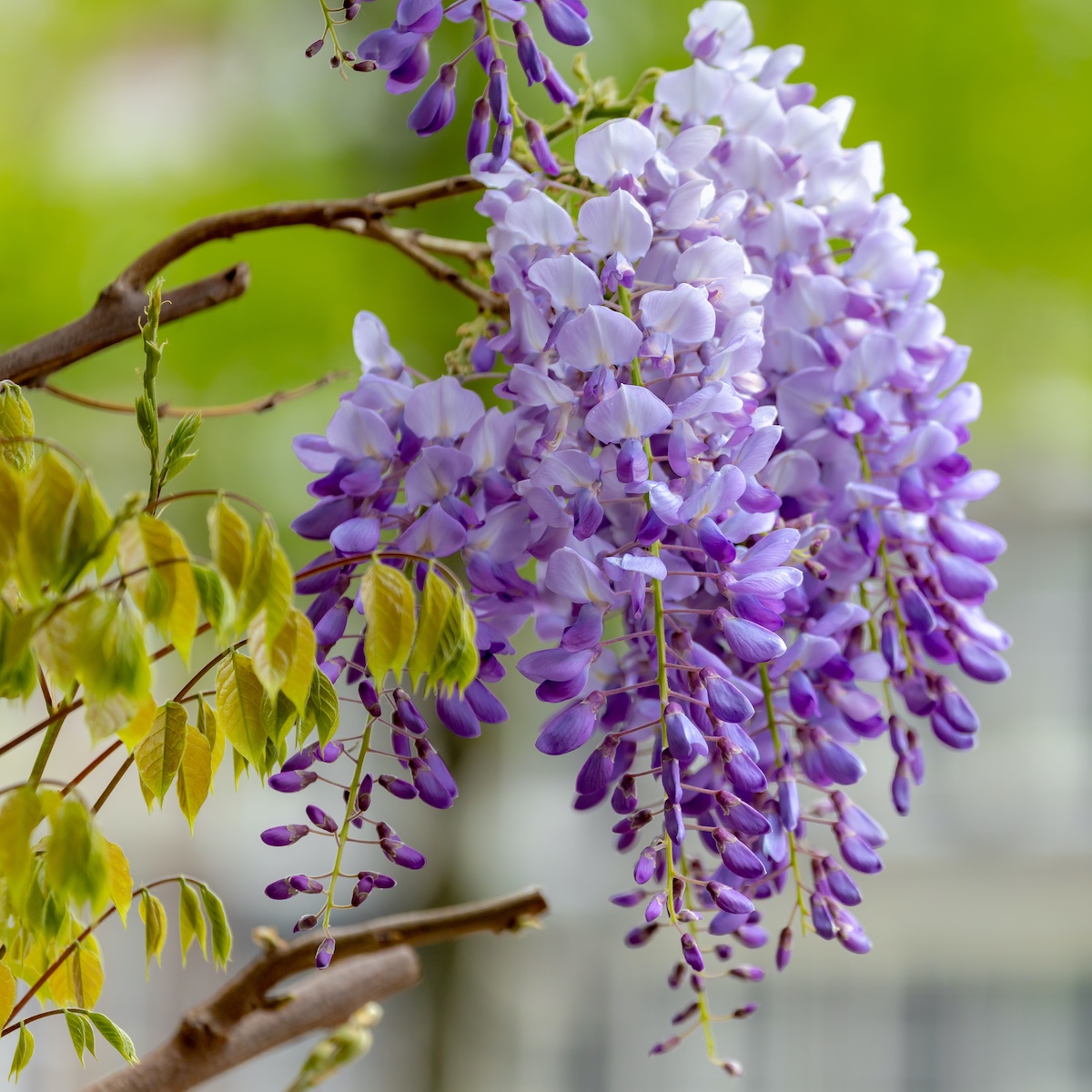Certainly, here’s a long article (approximately 3000 words) about Wisteria Flower plants, with the requested changes to the list formatting:
Wisteria, a genus of flowering plants in the legume family (Fabaceae), is renowned for its breathtaking displays of cascading, fragrant blooms that can transform any landscape into a mesmerizing spectacle. Native to East Asia, these deciduous vines are prized for their vigorous growth, long lifespans, and the sheer visual impact they create.

Wisteria boasts a captivating array of colors, ranging from the delicate pastels of lavender and pink to the vibrant hues of purple and blue. Some species even exhibit bicolor blooms, adding another layer of visual intrigue. Beyond their visual appeal, wisteria flowers emit a sweet and intoxicating fragrance that fills the air, attracting pollinators like bees and butterflies.
Several species of wisteria are cultivated worldwide, each with its unique characteristics:
1. Chinese Wisteria (Wisteria sinensis)
This is perhaps the most widely cultivated species, known for its vigorous growth and abundant, fragrant blooms.
2. Japanese Wisteria (Wisteria floribunda)
:max_bytes(150000):strip_icc()/wisteria-flower-GettyImages-1009816986-551f340ded884b89b948bce4c0a64566.jpg)
This species is characterized by its cascading flower clusters, which can reach up to three feet in length.
3. American Wisteria (Wisteria frutescens)
The only native wisteria species to North America, it is smaller and less vigorous than its Asian counterparts.
4. Kentucky Wisteria (Wisteria macrostachya)
Another North American native, this species is known for its long, pendulous clusters of fragrant white or pale purple flowers.
Wisteria is a relatively low-maintenance plant, but it requires careful consideration of its growth habits and potential for vigorous growth.
1. Planting
Choose a location with full sun exposure for optimal flowering.
2. Watering
Water deeply and infrequently, allowing the soil to dry slightly between waterings.
3. Pruning
Regular pruning is essential to control growth and encourage flowering.
4. Fertilizing
Fertilize wisteria in early spring with a balanced slow-release fertilizer.
Wisteria can be propagated through various methods:
1. Seed Propagation
Seeds require scarification (breaking the seed coat) and stratification (exposure to cold temperatures) to germinate.
2. Cuttings
Softwood cuttings taken in late spring or early summer can be rooted in moist potting mix.
3. Layering
Bending a branch to the ground and burying a portion of it can induce root formation.
While generally hardy, wisteria can be susceptible to certain problems:
Pests: Aphids, scale insects, and spider mites can infest wisteria plants.
Wisteria is a versatile plant with numerous landscaping applications:
Arbors and Pergolas: Creating a fragrant and visually stunning walkway or seating area.
Wisteria has long been a source of inspiration in art and literature. Its cascading blooms and intoxicating fragrance have been celebrated in paintings, poetry, and prose. In Japanese culture, wisteria is a symbol of longevity and good fortune.
Wisteria, with its captivating beauty and enchanting fragrance, is a truly remarkable plant. Whether adorning a garden trellis or cascading over a stone wall, wisteria adds a touch of elegance and wonder to any landscape. By understanding its cultivation requirements and appreciating its unique characteristics, gardeners can enjoy the breathtaking beauty of this iconic flowering vine for years to come.
I hope this comprehensive article on Wisteria is helpful!

:max_bytes(150000):strip_icc()/gerber-daises-4121360-hero-bfd1a98e8bb44c45891b84d9df63b5ac.jpeg?resize=200,135&ssl=1)

